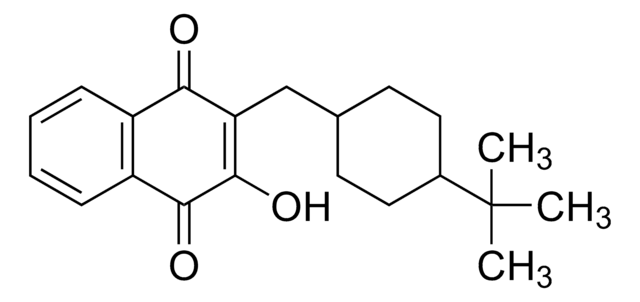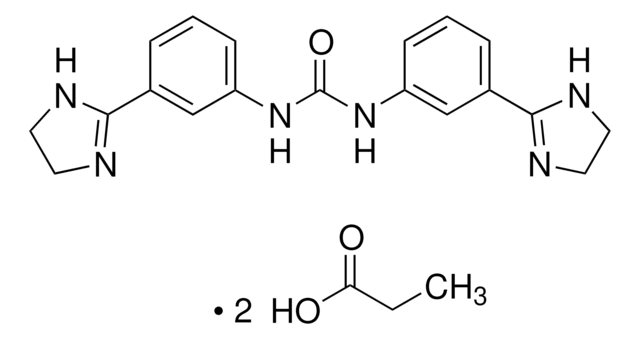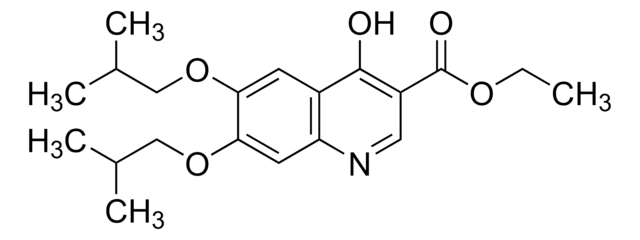32154
Buparvaquone
VETRANAL®, analytical standard
Synonyme(s) :
2-[(4-tert-Butylcyclohexyl)methyl]-3-hydroxy-1,4-naphthoquinone, 2-[[4-(1,1-Dimethylethyl)cyclohexyl]methyl]-3-hydroxy-1,4-naphthalenedione
About This Item
Produits recommandés
Qualité
analytical standard
Niveau de qualité
Gamme de produits
VETRANAL®
Technique(s)
HPLC: suitable
gas chromatography (GC): suitable
Application(s)
forensics and toxicology
veterinary
Format
neat
Température de stockage
2-8°C
Chaîne SMILES
CC(C)(C)C1CCC(CC1)CC2=C(O)C(=O)c3ccccc3C2=O
InChI
1S/C21H26O3/c1-21(2,3)14-10-8-13(9-11-14)12-17-18(22)15-6-4-5-7-16(15)19(23)20(17)24/h4-7,13-14,24H,8-12H2,1-3H3
Clé InChI
KLLIVCPQDTYMLC-UHFFFAOYSA-N
Vous recherchez des produits similaires ? Visite Guide de comparaison des produits
Application
Informations légales
Code de la classe de stockage
11 - Combustible Solids
Classe de danger pour l'eau (WGK)
WGK 3
Point d'éclair (°F)
Not applicable
Point d'éclair (°C)
Not applicable
Choose from one of the most recent versions:
Déjà en possession de ce produit ?
Retrouvez la documentation relative aux produits que vous avez récemment achetés dans la Bibliothèque de documents.
Notre équipe de scientifiques dispose d'une expérience dans tous les secteurs de la recherche, notamment en sciences de la vie, science des matériaux, synthèse chimique, chromatographie, analyse et dans de nombreux autres domaines..
Contacter notre Service technique







